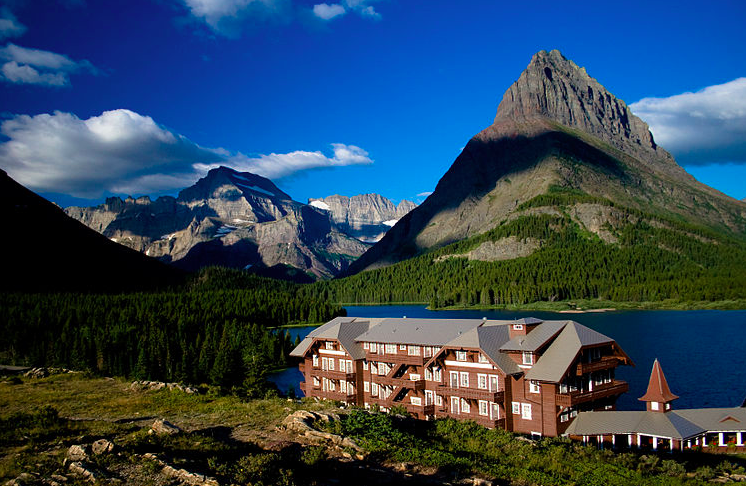To provide observations and information on the emerging fields of landscape scale conservation, heritage preservation, and sustainable community development.
Newsletter
Stay up-to-date with the latest nature, culture and community news.
We won’t spam you or share your information. Newsletters are sent approximately 10 times a year. Unsubscribe at any time.

Corporate Role in Parks Recalls Earlier Era, Presents New Challenges
This summer saw a flurry of critical articles centered on a proposed change in how the National Park Service solicits and recognizes private donations, including from corporate entities. But is the link between conservation and corporations actually new? And what does it reveal about deeper connections between economic change in the United States and the manner in which the country manages its public lands and historic sites?

Lessons in Partnerships along the Appalachian Trail
The Appalachian Trail Museum in Pennsylvania’s Pine Grove Furnace State Park serves as a great introduction to the people who made the trail a reality. For insight into the intersection of the trail with the growth of the environmental movement and the need to secure permanent protection for the trail during the rise of the property rights movement, read Sarah Mittlefehldt’s book Tangled Roots: The Appalachian Trail and American Environmental Politics (2013). In it, she offers some valuable insights on forming conservation partnerships in a challenging world.

Bridging the Nature/Culture Divide with Ecological Restoration
How we resolve the dissonance in our thinking between the goals of conserving ‘nature’ and ‘culture’. One area where this question is being dealt with in an engaging way is within the field of ecological restoration. Off the west coast of Canada, on a small island in the Gulf Islands archipelago, The Galiano Conservancy Association offers an exciting model of how to transform traditional nature conservation.

Guide to the Parks – Past, Present and Future
Last summer, I taught a college course on the History of U.S. National Parks. At the time, I lamented the relative lack of high-quality, scholarly research on recent National Park history to share with my students. Fortunately for me, when I teach the class again this spring, I will now have the book I was looking for – the recently published A Thinking Person’s Guide to America’s National Parks.

Highway Planning on a Landscape Scale: The Next Generation
What happens when a highway project, long planned to improve the functionality of the overall transportation system, runs up against new designations that look at the value of resources on a landscape scale? How can infrastructure development manage this changing landscape? After all it does not look like this kind of thinking is going away. Read the back story and some recommendations for the future.

Corporate Role in Parks Recalls Earlier Era, Presents New Challenges
This summer saw a flurry of critical articles centered on a proposed change in how the National Park Service solicits and recognizes private donations, including from corporate entities. But is the link between conservation and corporations actually new? And what does it reveal about deeper connections between economic change in the United States and the manner in which the country manages its public lands and historic sites?

Lessons in Partnerships along the Appalachian Trail
The Appalachian Trail Museum in Pennsylvania’s Pine Grove Furnace State Park serves as a great introduction to the people who made the trail a reality. For insight into the intersection of the trail with the growth of the environmental movement and the need to secure permanent protection for the trail during the rise of the property rights movement, read Sarah Mittlefehldt’s book Tangled Roots: The Appalachian Trail and American Environmental Politics (2013). In it, she offers some valuable insights on forming conservation partnerships in a challenging world.

Bridging the Nature/Culture Divide with Ecological Restoration
How we resolve the dissonance in our thinking between the goals of conserving ‘nature’ and ‘culture’. One area where this question is being dealt with in an engaging way is within the field of ecological restoration. Off the west coast of Canada, on a small island in the Gulf Islands archipelago, The Galiano Conservancy Association offers an exciting model of how to transform traditional nature conservation.

Guide to the Parks – Past, Present and Future
Last summer, I taught a college course on the History of U.S. National Parks. At the time, I lamented the relative lack of high-quality, scholarly research on recent National Park history to share with my students. Fortunately for me, when I teach the class again this spring, I will now have the book I was looking for – the recently published A Thinking Person’s Guide to America’s National Parks.

Highway Planning on a Landscape Scale: The Next Generation
What happens when a highway project, long planned to improve the functionality of the overall transportation system, runs up against new designations that look at the value of resources on a landscape scale? How can infrastructure development manage this changing landscape? After all it does not look like this kind of thinking is going away. Read the back story and some recommendations for the future.


